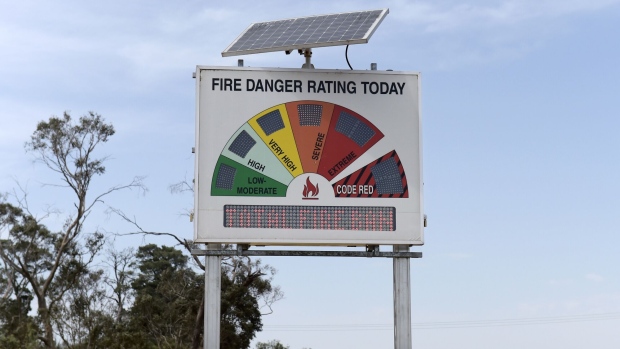Feb 27, 2024
Heat Waves in Four Australian States Fueling Wildfire Threat
, Bloomberg News

(Bloomberg) -- Heat waves are bearing down on four Australian states, as authorities battle a blaze in the nation’s populous southeast that’s burned homes and led to thousands of people being advised to leave the area.
A catastrophic fire-danger rating — the strongest warning — has been declared for the Wimmera region, which encompasses 2.3 million hectares in Victoria state’s west, the Bureau of Meteorology said. Several other districts in the state have been issued with an extreme warning, and temperatures are forecast to reach 40C (104F) or more. Total fire bans are in place across several cities, including Melbourne.
“The conditions are not favorable at all for us, they’re pretty extreme in terms of the winds and the heat,” Rick Nugent, Victoria’s Emergency Management Commissioner, said in an Australian Broadcasting Corp. radio interview Wednesday. “The risk is that with the heat and the wind, that embers are blown forward and then start spot fires and then they start running again.”
A fire northwest of the regional Victorian city of Ballarat has been controlled but authorities are warning that it could breach containment lines. The fire has so far burned about 22,000 hectares of land and destroyed five homes.
More than 600 firefighters from Victoria and neighboring New South Wales state are working to contain the spread of the fire, the ABC reported. According to the Guardian, more than 30,000 Victorians have been urged to leave their homes.
Some Australian regions have experienced record-breaking dry, hot conditions in recent months, prompting concerns of an elevated bushfire risk. Heat waves are also baking large parts of South Australia and Western Australia states as well as New South Wales, the country’s most populous state. An extreme fire danger rating has been issued for seven districts in South Australia.
Read: Wildfire’s Toxic Legacy Leaves Children Gasping for Air Years Later
Australia has a troubled history with bushfires. Between July 2019 and March 2020, the so-called Black Summer fires raged across the nation’s east, killing 33 people and consuming 24 million hectares of land — an area roughly equivalent to half of California.
©2024 Bloomberg L.P.





